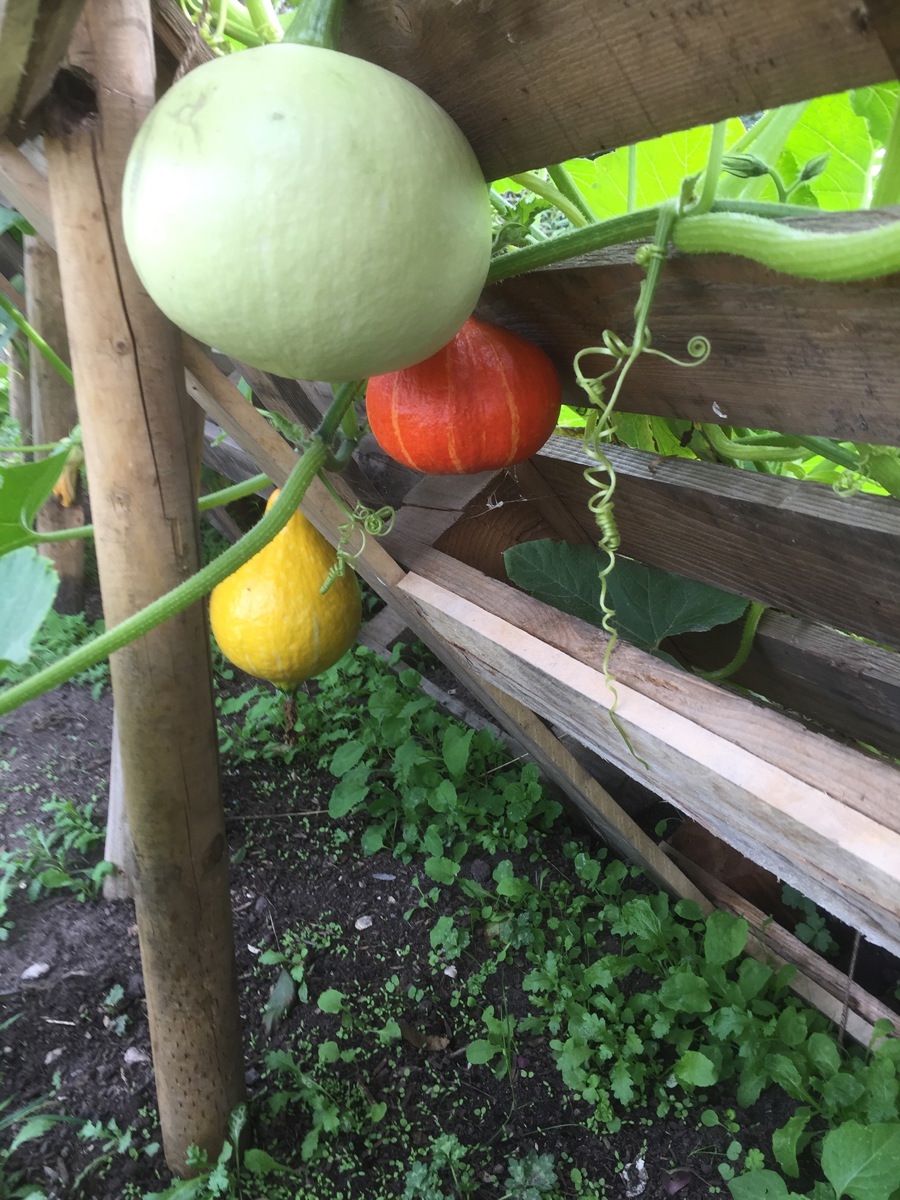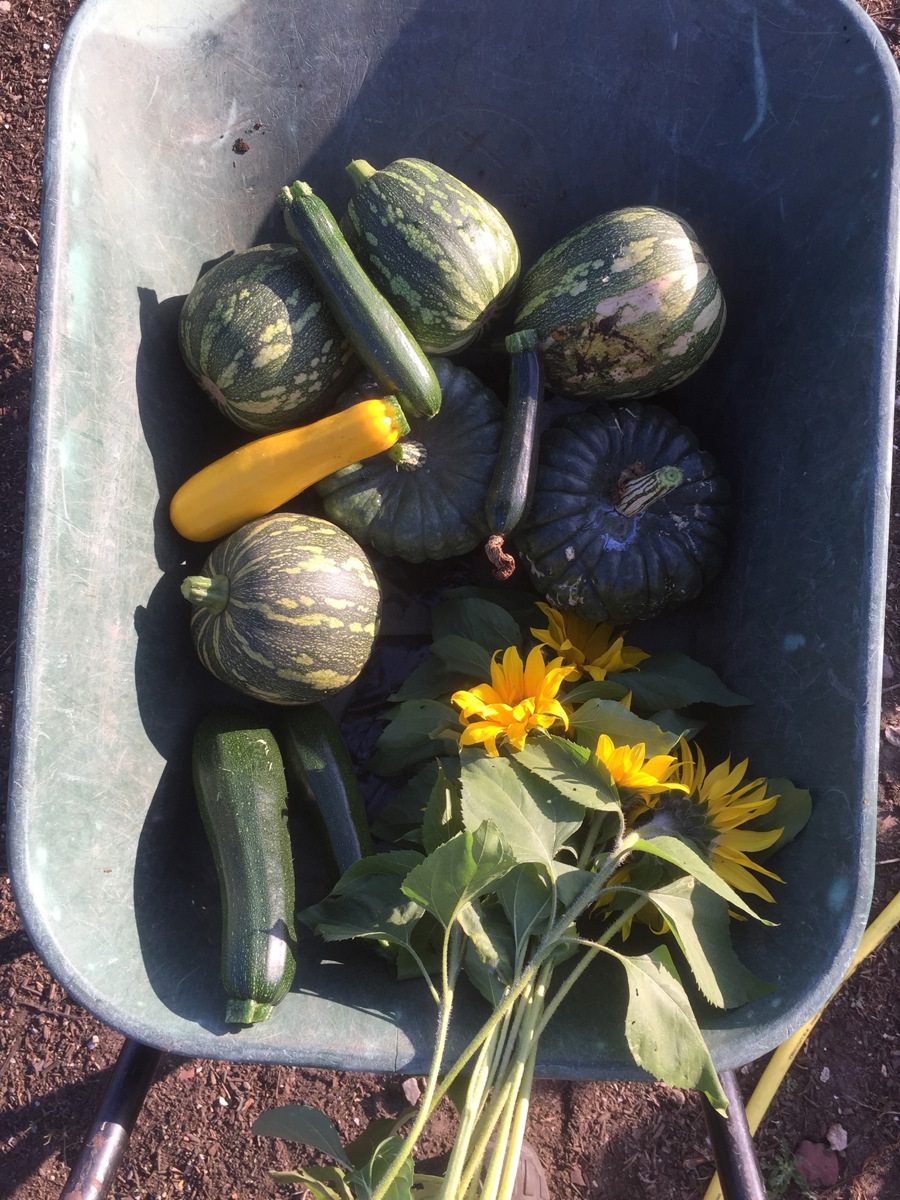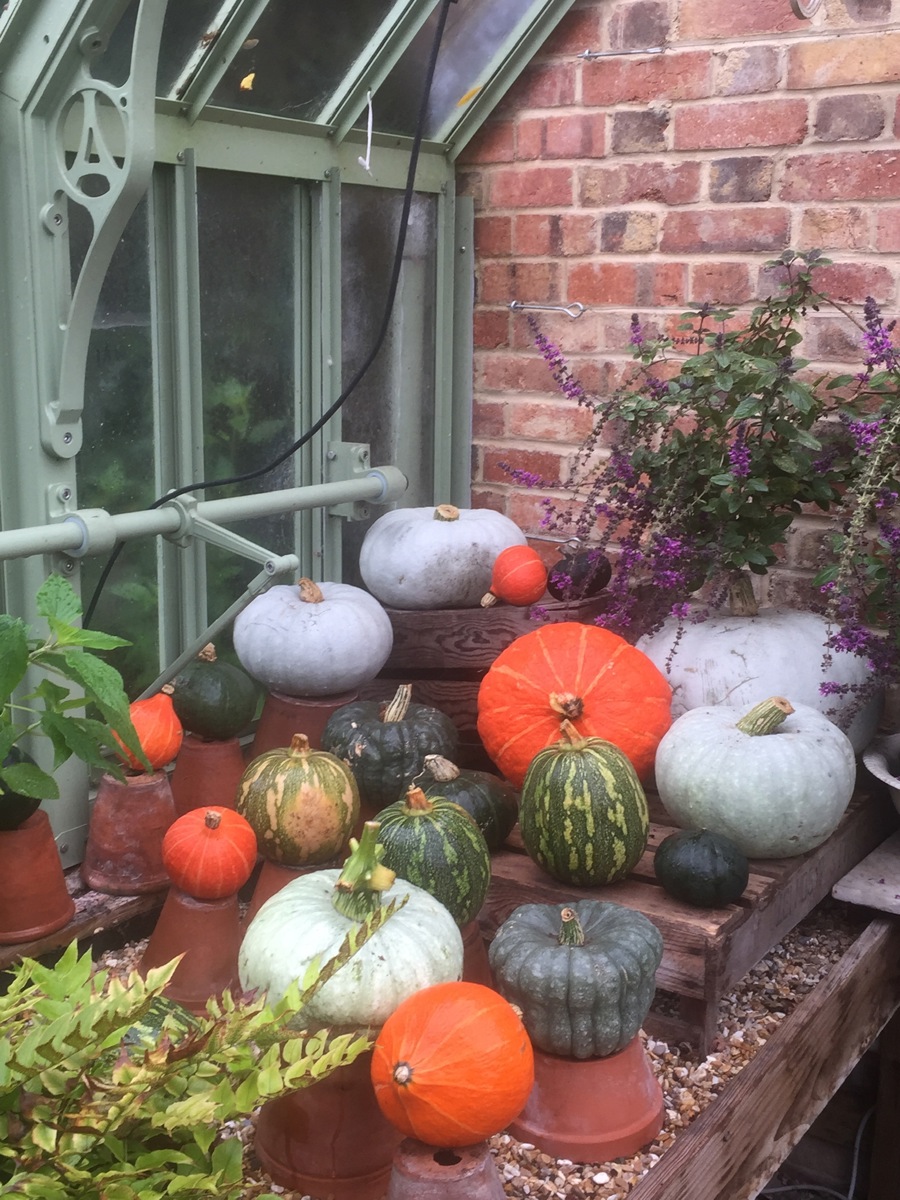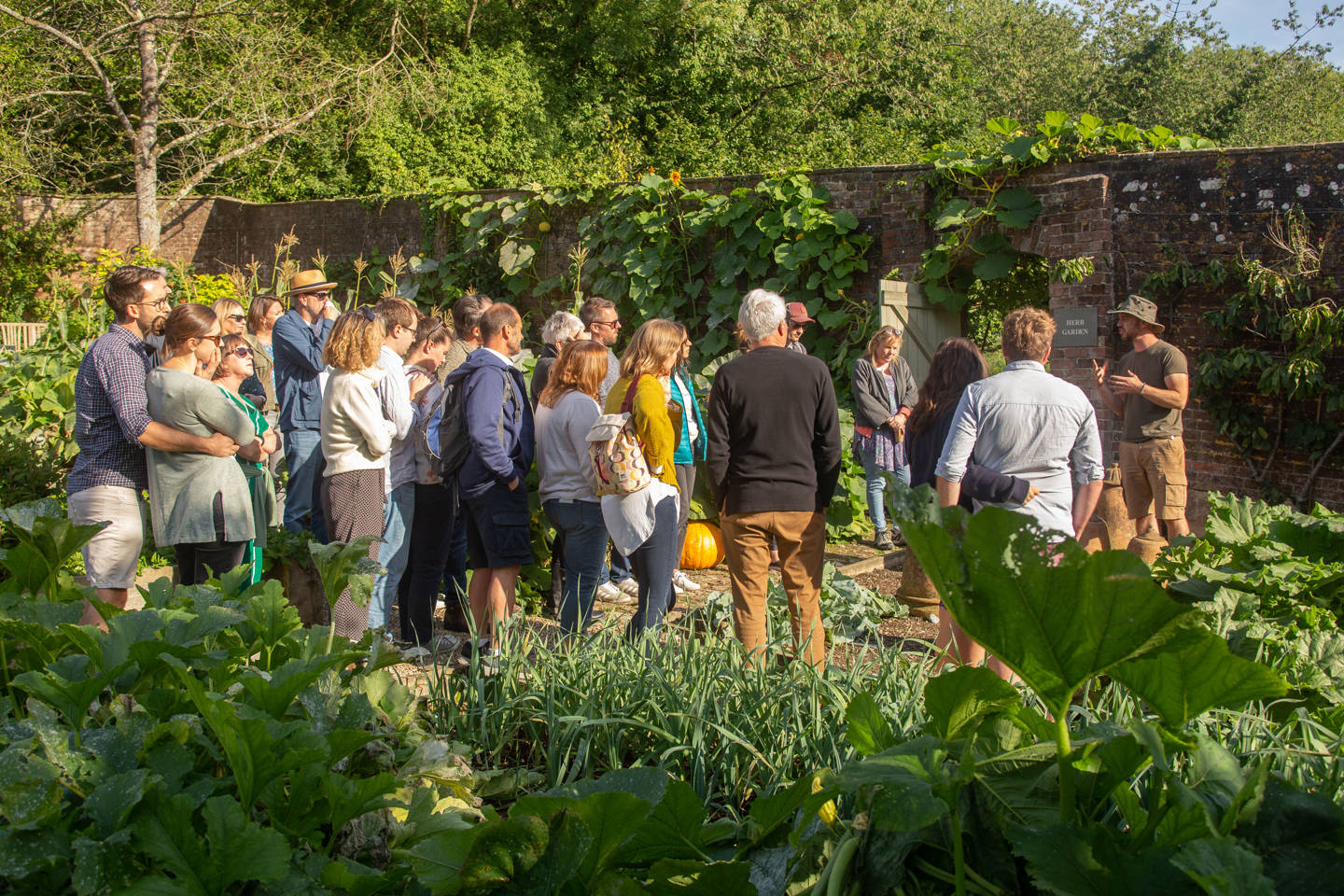Down by the coast, Kitchen Gardener Roseanna at THE PIG-on the beach has been growing winter squash! The perfect addition to a warm dish for those cold evenings.
Winter squash is naturally low in fat and calories and delivers significant nutritional benefits, because the flavours are generally mild-to-sweet squash is a perfect ingredient to incorporate into your seasonal cooking. The orange and yellow flesh helps to bring a touch of bright colour to your dishes, which is a definite bonus in the colder months.
 We love Squash because it is such a convenience vegetable, it can be easily worked into soups, stews, gratins and tarts and mixed with grains and salads or on its own as a simple side dish.
We love Squash because it is such a convenience vegetable, it can be easily worked into soups, stews, gratins and tarts and mixed with grains and salads or on its own as a simple side dish.
With the squash seeds sown back in April, our winter squashes were harvested through October. Squash can take quite a long time to grow but they are well worth the wait, I always find it exciting visiting the squash patch and discovering the big bright fruits hidden amongst the vines.
To sow squash seeds, we used 9cm pots and allowed them to germinate in the glasshouse, once the plants looked strong (after about a week), we transferred them out into the cold frames to grow for another 3 weeks. After this we had prepared their beds and they were planted out in June, this year we decided to grow a few different varieties of squash including ghost, onion and Queensland blue.

Tips for growing your own winter squash
There are lots of helpful tricks for growing good squashes, and we are definitely still learning, here are a few we have picked up here at beach.
Preparation is key - Ensure you prepare the area well, squash is big, hungry and thirsty, dig a hole and fill this with a generous amount of manure, cover with a mound of earth or compost and plant on top of this. This way the roots can find their way down to the nitrogen rich manure, but the plant and fruit wont rot from sitting right on top of it.
Don’t forget to water - It is important to consider how you will water the plants, they will be growing through the heat of summer, therefore will need lots of water to grow into big beautiful squashes. We used drip line irrigation pipe, to slowly soak the ground, but you can also water by hand if you have a small patch.
Do you have enough space? Squash are big sprawling plants, we used wooden pallets lent up against posts this year to maximise our growing space. It gave something for the vines to climb up and recycled a waste product.
Time is important - Winter squash need time to cure after harvesting, if they have been cured, they can then be stored potentially for months before use. They will be glossy and bright when first cut from the plant but if left somewhere warm and dry with good ventilation, the skins will harden and protect the flesh inside from rot – this process should take 10-14 days.
 The chefs here love the squash, especially their impressive size, nutty and sweet flavours and firm texture. One dish that uses the Onion squash involves roasting it in slices with garlic and thyme. This then goes with Nasturium leaf dressing with buckwheat, watercress and pickled squash garnish.
The chefs here love the squash, especially their impressive size, nutty and sweet flavours and firm texture. One dish that uses the Onion squash involves roasting it in slices with garlic and thyme. This then goes with Nasturium leaf dressing with buckwheat, watercress and pickled squash garnish.
A few other dishes that use our winter squash is the Crown prince squash and Lambs heart, Spiced seeds and garden mustard frills and Squash and old Winchester cheese straws.
After a successful harvest, the gardeners are already starting to plan new varieties to try and frame designs...
Roseanna – Kitchen Gardener at THE PIG-on the beach

